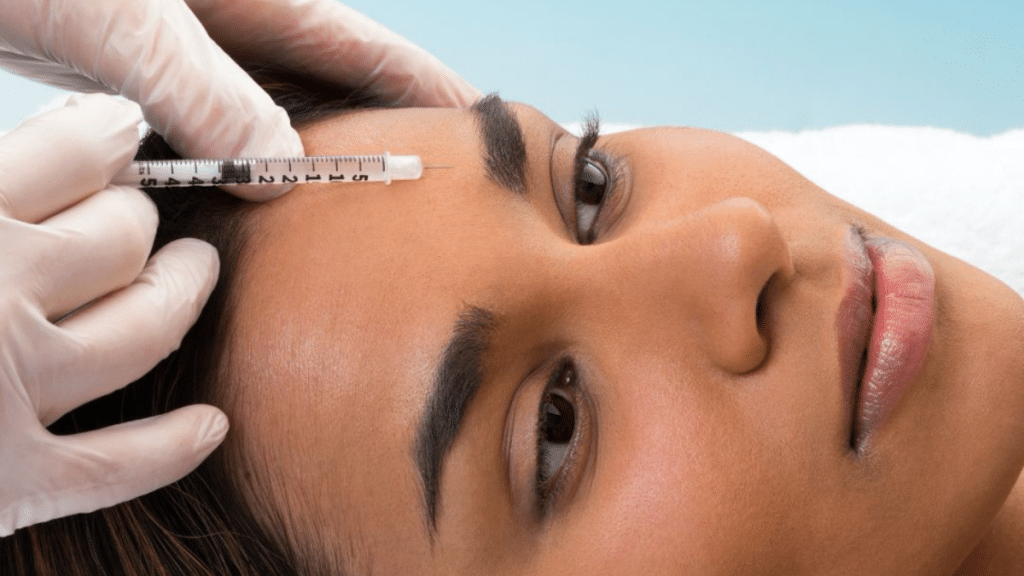If you’re thinking about Botox for the first time—or even if it’s a regular part of your beauty routine—you may wonder how long the effects last, and how often you’ll have to get touch ups. Botox is incredibly popular for smoothing out wrinkles and helping patients look more refreshed, but since it’s not permanent, knowing how long it will take for the effects to wear off will help you plan your treatments and understand the long-term cost.
Let’s dive into what you can expect in terms of Botox’s longevity, what might affect how long it lasts, and some tips to make the most of your results.
How Long Do Botox Results Typically Last?
In most cases, the effects of Botox last about three to four months. However, this can vary based on factors like the area being treated, the amount used, and even your individual body chemistry.
Here’s a quick breakdown of Botox’s typical lifespan depending on the area:
- Forehead lines: 3–4 months
- Frown lines (between eyebrows): 3–4 months
- Crow’s feet (around the eyes): 3–4 months
- Lip lines and chin dimples: 2–3 months
- Jawline and neck bands: 3–6 months
While these are average timeframes, you may notice that your Botox starts to fade gradually within this period. Some people even find that Botox lasts a bit longer over time if they get treatments regularly, as the muscles in treated areas become weaker and stay relaxed for longer.
What Affects How Long Botox Lasts?
There’s no exact science when it comes to Botox longevity—several factors can affect how long your results will last.
1. Your Metabolism and Age
People with a fast metabolism may notice that Botox wears off quicker than average. Age can play a role too: younger people, especially those who have stronger muscles and faster metabolic rates, might experience shorter-lasting effects compared to older patients.
2. Dosage and Injection Technique
The amount of Botox used and how well the injections are placed can also make a big difference. Higher doses may last longer but could also limit movement too much, so finding a balance is important. An experienced injector knows exactly where and how much to inject for results that last as long as possible while still looking natural, so make sure you find a high-quality med spa or physician when searching for Botox treatment providers.
3. Area Treated
Some areas, like the forehead and around the eyes, are highly expressive and therefore may not hold Botox as long as less mobile areas like the neck.
4. Consistency of Your Botox Treatments
If you get Botox regularly, the muscles can start to “learn” to stay relaxed, which might help your results last longer over time.
5. Lifestyle Choices
Certain lifestyle factors like smoking, sun exposure, and stress can speed up Botox’s breakdown in the body. Wearing sunscreen and avoiding smoking can help you hold onto that smooth look longer.
Tips to Make Botox Last Longer
While Botox naturally fades, there are a few things you can do to help make the most of it.
- Follow Aftercare Instructions: For the first 24 hours after treatment, avoid touching your face, lying down, or exercising intensely to keep Botox from moving out of place. This helps ensure it’s as effective as possible.
- Take Zinc Supplements: Some research suggests that Botox may last longer when you have adequate zinc levels in your body. Talk to your provider about whether zinc supplements could be beneficial.
- Stick to a Consistent Schedule: Scheduling Botox every three to four months helps maintain a smooth appearance. Waiting too long between treatments can allow muscle movement to fully return, which could make lines reappear faster.
- Take Good Care of Your Skin: Using moisturizer and sunscreen daily helps keep your skin hydrated and protects it from UV damage, which may help your Botox last longer.
What Happens When Botox Wears Off?
When Botox begins to wear off, you’ll notice muscle movement returning gradually to treated areas, and lines or wrinkles will start to reappear. The process is generally subtle rather than sudden, so it’s not like you’ll wake up one day with a dramatically different look. Once Botox fades completely, wrinkles typically return to how they looked before—there’s no worsening effect from Botox injections.
How Often Should You Plan on Getting Botox?
For most people, getting Botox every three to four months is a good plan to maintain a consistent look. Over time, some clients notice they can stretch out the time between treatments a bit longer because their muscles become weaker with regular Botox use.
Looking for Alternatives?
If you’re interested in wrinkle treatments but would like longer-lasting options, there are some alternatives that may be worth exploring:
- Dysport: Similar to Botox in that the active ingredient is botulinum toxin, Dysport is an effective wrinkle relaxer that some patients notice kicks in faster and may last a bit longer for certain areas.
- Xeomin: Xeomin is another botulinum toxin product, which some clients prefer if they’ve developed a resistance to Botox.
- Jeuveau: Known as “Newtox,” Jeuveau works similarly to Botox and can provide a smooth, refreshed appearance.
Final Thoughts: Making the Most of Your Botox Treatments
Patients can generally expect Botox to last about three to four months. However, with regular treatments, good skin care, and a little attention to lifestyle, you might notice you get longer-lasting results.
